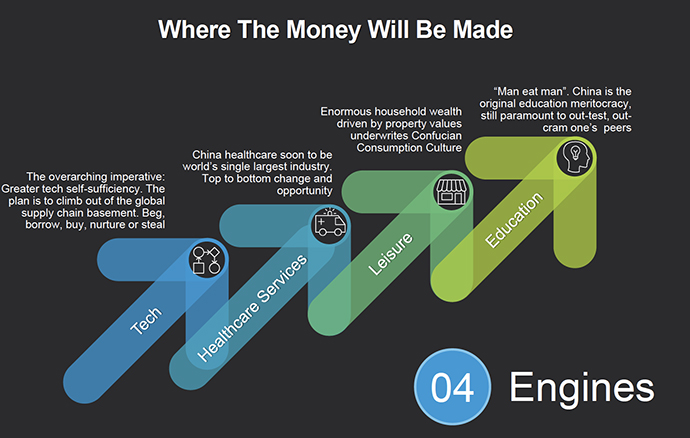Chinese Education Startup Puts Western Teachers on Notice — Wall Street Journal

A Chinese education company backed by U.S. investors including Kobe Bryant is cracking down on how its Western teachers cover politically fraught topics.
VIPKid, one of China’s most valuable online education startups, has put hundreds of its mostly American teachers on notice for using certain maps in their classes with Chinese students, and has severed two teachers’ contracts for discussing Taiwan
and Tiananmen Square in ways at odds with Chinese government preferences,people familiar with the company say. Since last fall, teachers’ contracts state that discussing “politically contentious” topics could be cause for dismissal, according to one reviewed by The Wall Street Journal.
The moves highlight the balance a Chinese company must strike in fulfilling global aspirations while toeing Beijing’s line. Five-year-old VIPKid is currently in talks to raise as much as $500 million in new funding from U.S. and other investors that could value the company at roughly $6 billion, people familiar with the fundraising said.
“A company must keep good relations with the government and ideology,” said Peter Fuhrman, chief executive of investment firm China First Capital . “But that can cause friction when you’re also courting foreign investors, expanding business overseas and employing a large American workforce.”
Beijing-based VIPKid says it has more than 60,000 teachers in the U.S. and Canada who teach English to more than 500,000 children ages 4 through 15, who live mostly in China. Teachers work as independent contractors and can earn between $14 and
$22 an hour. They must have a bachelor’s degree, at least one year of teaching experience and eligibility to work in the U.S. or Canada.
Curricula are provided, and teachers give English-language instruction, sometimes using geography or historical figures. VIPKid’s approach is consistent with maps and materials in the Chinese education curriculum, which calls Taiwan a part of China. Textbooks don’t mention the military’s suppression of the Tiananmen Square pro-democracy demonstrators in 1989, and discussion of it is forbidden.
A spokesman said VIPKid has “an elevated level of responsibility to protect the safety and emotional development of the young children on our platform.” The company expects teachers to understand cultural expectations, he said, adding it had to “make a difficult decision” to terminate the contracts of “an exceptionally small number of teachers” who “decided to ignore the needs of their students” and “the preference of their parents.”
Western companies including Gap Inc. and hotel giant Marriott International Inc. have been forced to apologize in the past for
online communications, websites or merchandise that angered Beijing or Chinese consumers on issues including Taiwan and Tibet.
Chinese education technology attracted $5.3 billion in investment last year, double the amount a year earlier, according to Dow Jones VentureSource data. VIPKid’s investors include U.S. hedge-fund firm Coatue Management LLC, venture-capital firm Sequoia Capital, Chinese social giant Tencent Holdings Ltd. and a venture fund co-launched by retired NBA star Kobe Bryant.
The company’s actions have rankled some teachers. Typically, these instructors have displayed maps of the world, including China, that they found on their own. Starting last fall, hundreds began receiving emails or calls from VIPKid stating their maps weren’t aligned with Chinese education standards, people familiar with the matter said. Teachers who refuse to adhere to the map standards could have their contracts terminated, after conversations with VIPKid. Map-related dismissals haven’t happened, said a person familiar with the company.
Will Rodgers, a 26-year-old American teacher based in Thailand, said he discussed Tiananmen Square twice during VIPKid lessons about famous Chinese landmarks. First, he told a 12-year-old student “the Chinese government jailed and killed
many people just for protesting.” He then showed a 15-year-old student photos and video footage of the protest, and his contract was terminated. Mr. Rodgers said he doesn’t agree with VIPKid’s stance, but doesn’t blame the company for ending his contract.
Another American teacher’s contract was terminated earlier this year after he told students that Taiwan was a separate country, according to people familiar with his case. A third teacher received a call from VIPKid after telling a student that Tibet, an autonomous region in China with a history of separatist activity, is a country, during a lesson on China’s neighbors, according to a
person familiar with the matter. He was told on the call he should refer to Tibet as part of China.
People familiar with VIPKid say it monitors classes for missteps over political content. Another person familiar with the matter said the company uses artificial intelligence to determine material students find engaging and to protect them from inappropriate behavior.
Some teachers and VIPKid investors say that education from foreign teachers, even if it is screened, can benefit students because they get exposed to other cultures. Rob Hutter, a founder and managing partner of Learn Capital, an early investor in VIPKid, said the company is trying to take a common-sense approach by teaching uncontroversial content.
“No matter what nation you’re teaching in, there are going to be things that we need to be thoughtful about,” he said. “Even in American classrooms, there are things you cannot discuss.”
“No matter what nation you’re teaching in, there are going to be things that we need to be thoughtful about,” he said. “Even in American classrooms, there are things you cannot discuss.”























